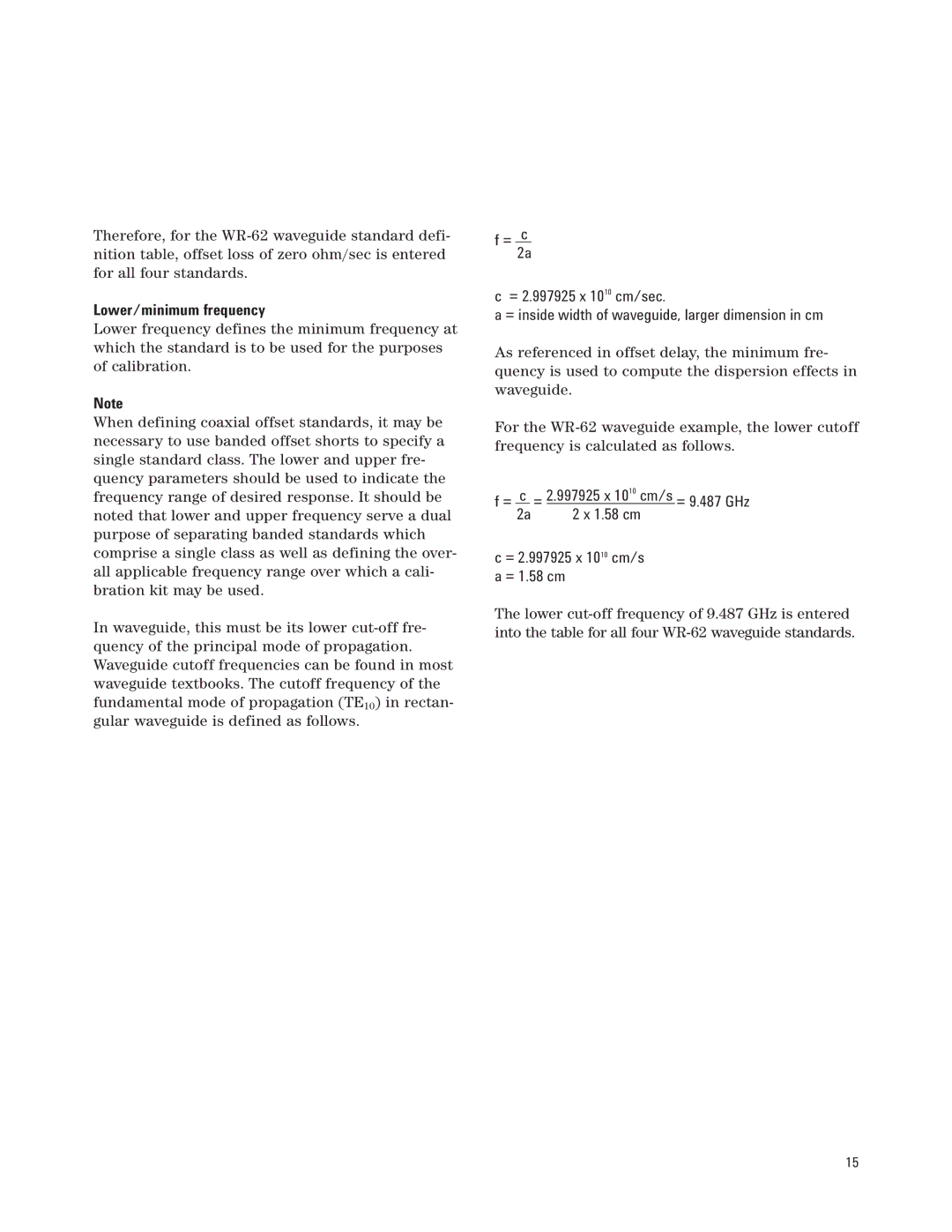Therefore, for the
Lower/minimum frequency
Lower frequency defines the minimum frequency at which the standard is to be used for the purposes of calibration.
Note
When defining coaxial offset standards, it may be necessary to use banded offset shorts to specify a single standard class. The lower and upper fre- quency parameters should be used to indicate the frequency range of desired response. It should be noted that lower and upper frequency serve a dual purpose of separating banded standards which comprise a single class as well as defining the over- all applicable frequency range over which a cali- bration kit may be used.
In waveguide, this must be its lower
f = c 2a
c = 2.997925 x 1010 cm/sec.
a = inside width of waveguide, larger dimension in cm
As referenced in offset delay, the minimum fre- quency is used to compute the dispersion effects in waveguide.
For the
f = c = 2.997925 x 1010 cm/s = 9.487 GHz
2a 2 x 1.58 cm
c = 2.997925 x 1010 cm/s a = 1.58 cm
The lower
15
